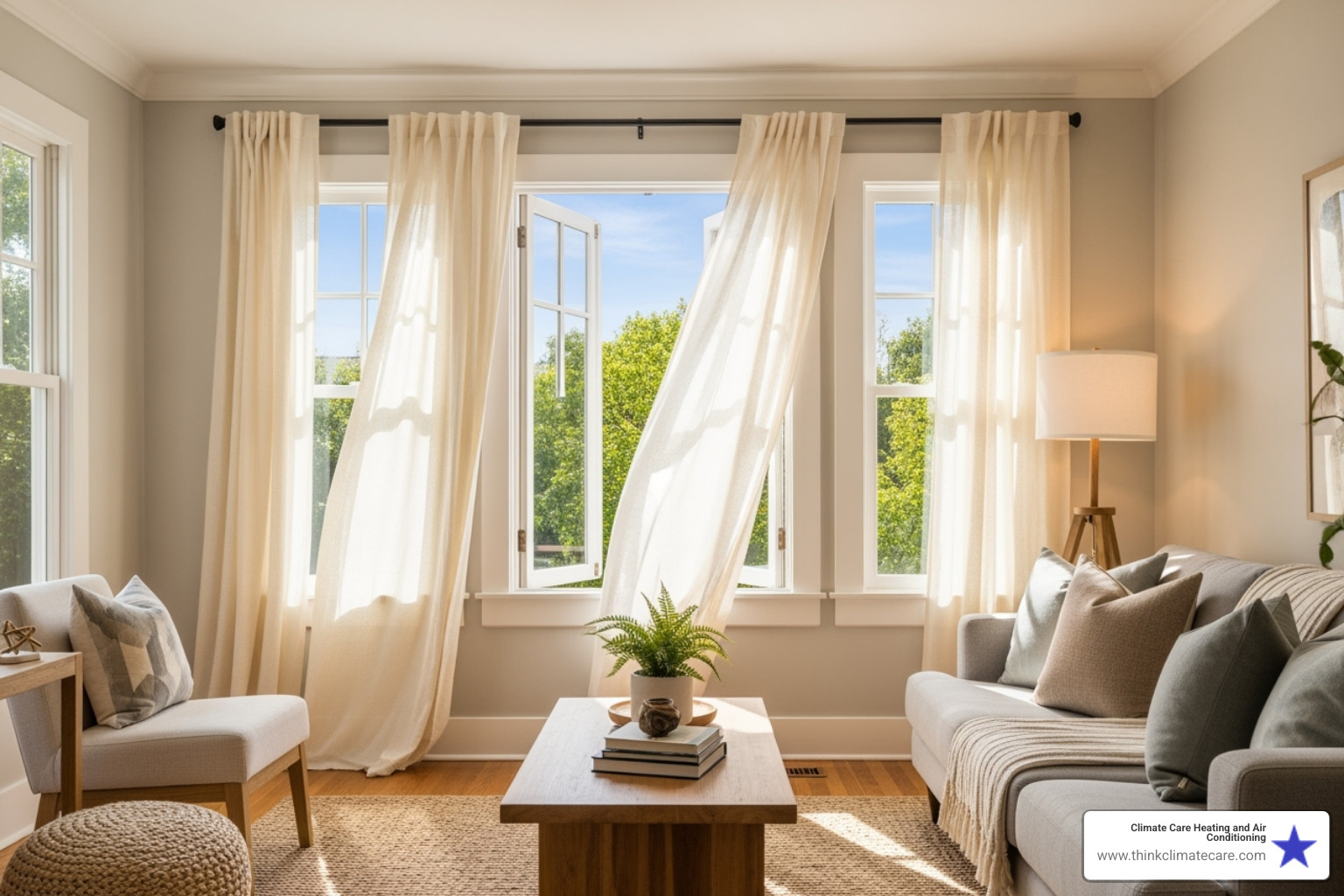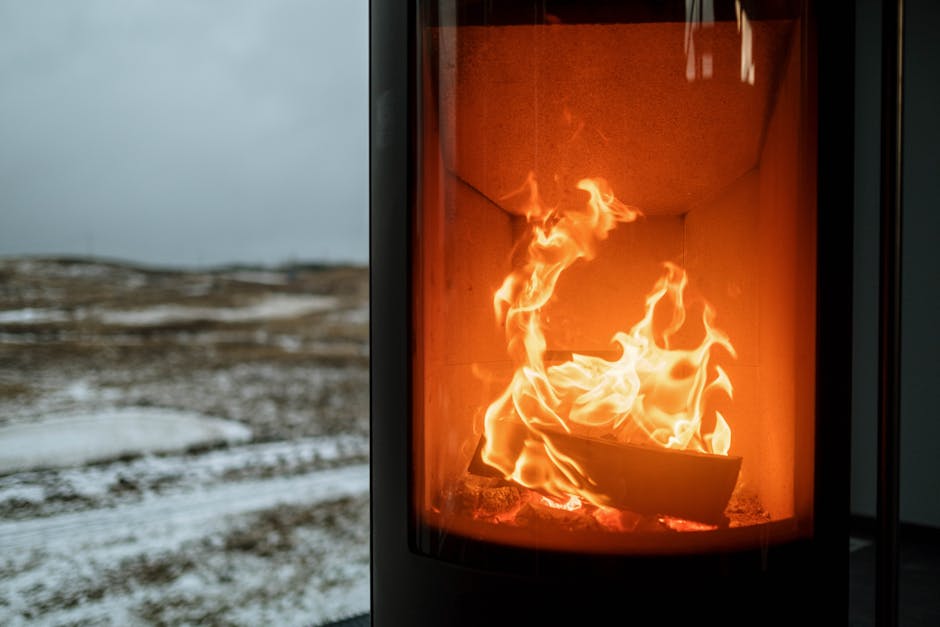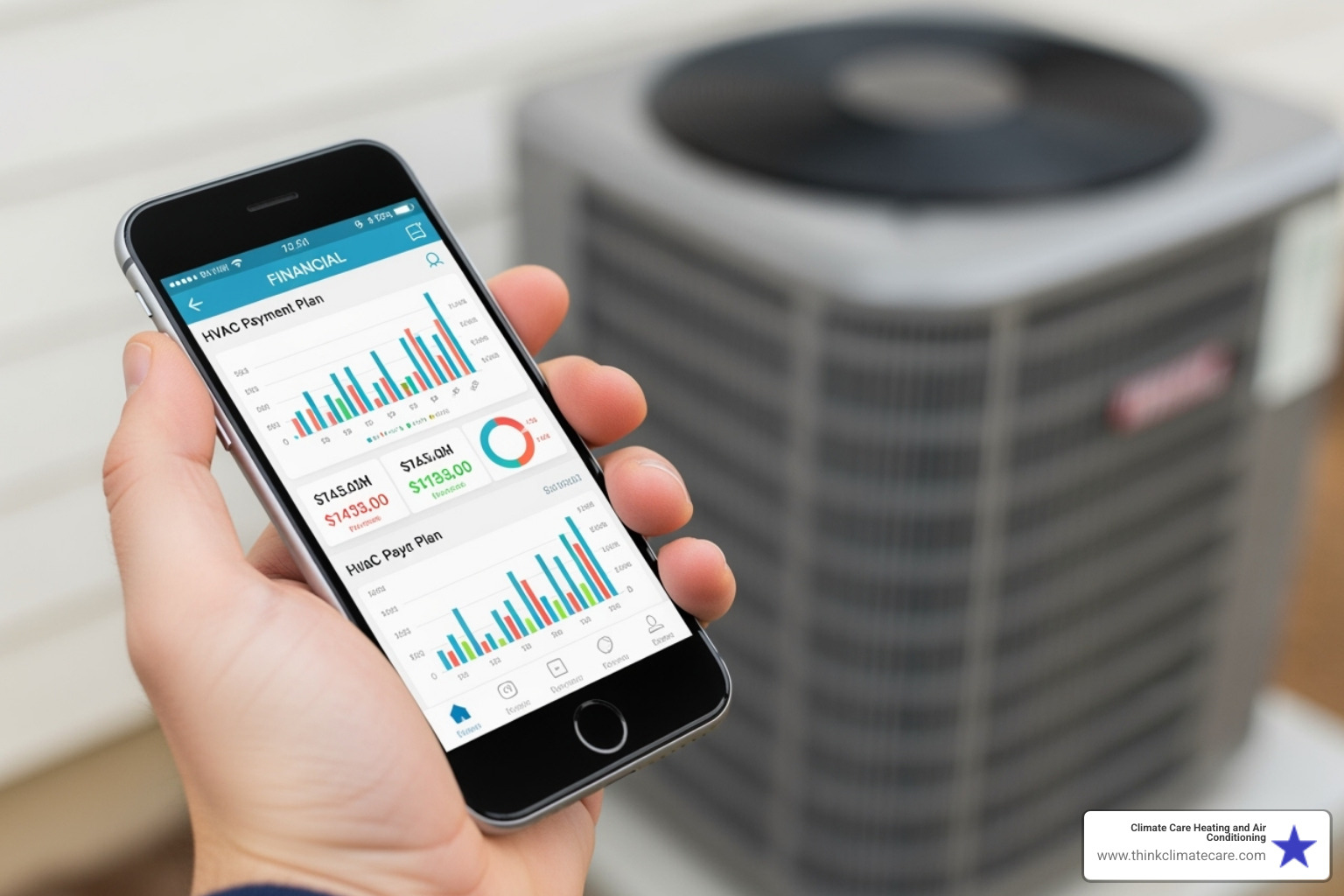Designing Your Dream Climate: An HVAC Guide for Homeowners
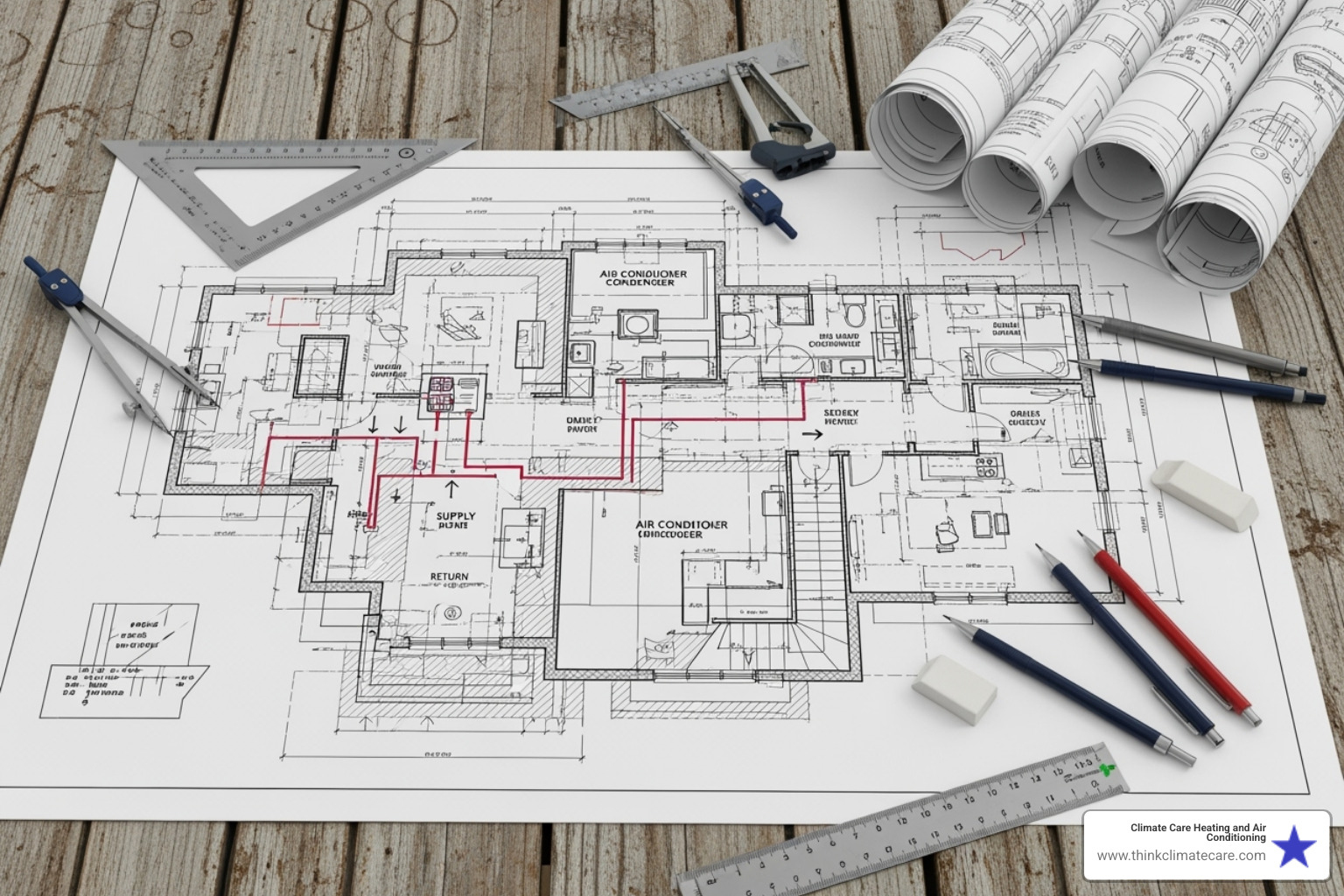
Why HVAC System Design is the Key to Your Home's Comfort
HVAC system design is the foundation of every comfortable home - it's the detailed planning process that determines exactly what equipment you need, where it goes, and how it all works together to keep your family comfortable year-round.
Key Components of HVAC System Design:
- Load Calculations - Determining exact heating and cooling needs using Manual J calculations
- Equipment Sizing - Selecting properly sized furnaces, air conditioners, and heat pumps
- Ductwork Layout - Designing air distribution pathways using Manual D standards
- System Integration - Coordinating all components for optimal performance
- Controls and Safety - Programming thermostats and safety features
Think of HVAC system design like the blueprint for a house. You wouldn't build without detailed plans, yet many homeowners end up with systems that were never properly designed. This creates problems like uneven temperatures, high energy bills, and equipment that breaks down too often.
The reality is stark: improperly designed systems can waste 20-40% more energy and fail years earlier than they should. As one industry expert noted, "Oversized AC systems tend to result in ineffective moisture removal, poor comfort, IAQ concerns, and durability issues."
For Manteca homeowners, getting the design right from the start means lower utility bills, fewer repair calls, and that peace of mind that comes from knowing your system will work when you need it most.
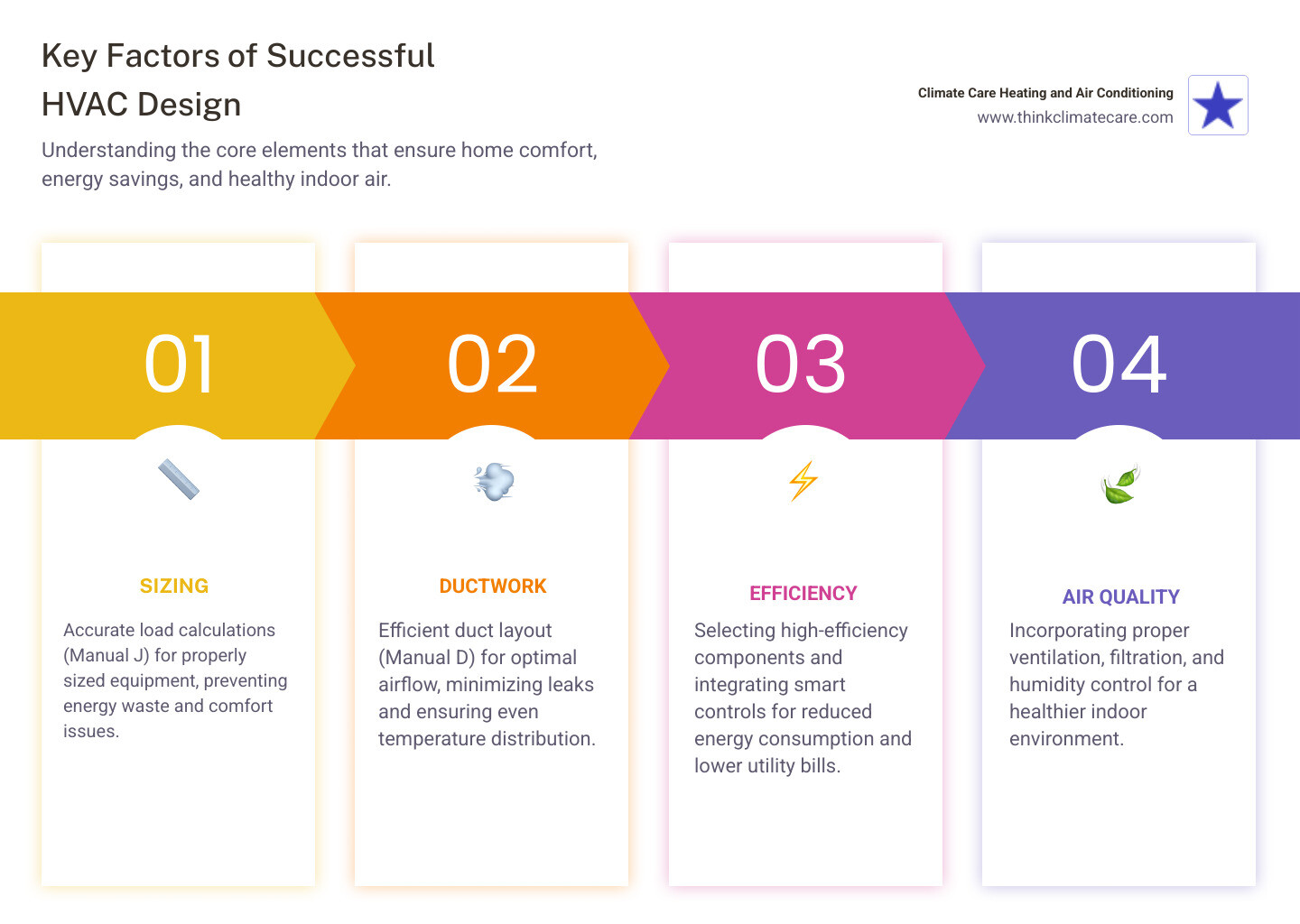
The Blueprint for Comfort: Core Principles of HVAC System Design
When we design an HVAC system for your Manteca home, we create a comprehensive plan that treats your house as an integrated system.
This means analyzing your home's building envelope—the walls, roof, windows, and foundation that separate your indoor space from the outside. We consider two critical elements: the thermal boundary (your insulation) and the air barrier, which prevents drafts and air leaks that make your system work overtime.
This holistic approach works with your home's characteristics to create an environment that supports both occupant health and comfort.
Our team focuses on four goals: Comfort (consistent temperature and humidity), Efficiency (lower energy bills), Durability (a long-lasting investment), and Health (clean, fresh air).
You can learn more about how we bring these principles to life through our comprehensive HVAC services.
Why a Professional HVAC System Design is Non-Negotiable
A common question is whether you can buy a system based on square footage alone. This approach is like buying shoes based on your height—you might get close, but you'll likely be uncomfortable.
- Oversized systems cause short-cycling: the AC cools the house too quickly, shutting off before removing humidity. This creates a cold, clammy home and leads to high energy bills and reduced equipment lifespan.
- Undersized systems are also troublesome, as they run constantly while struggling to keep up, much like a compact car trying to tow a boat.
Sizing mistakes also harm humidity control. A system needs to run long enough to pull moisture from the air, not just cool it. Otherwise, you get that sticky feeling even when it's cool.
Professional HVAC system design eliminates these headaches by using precise calculations instead of guesswork. Want to dive deeper into proper sizing? Check out our guide: Is New HVAC System Properly Sized for Your Home?
The Impact on Indoor Air Quality (IAQ) and Comfort
Your HVAC system design is the guardian of your indoor air quality (IAQ), affecting everything from your family's health to how well you sleep.
- Ventilation brings in fresh air and removes stale air. Since indoor air can be more polluted than outdoor air, a well-designed system provides fresh air without wasting energy.
- Humidity control is key to comfort. Your body feels a combination of temperature, humidity, and air movement. Levels above 60% feel muggy, while levels below 30% cause dry skin. A good system keeps humidity in the sweet spot.
- Filtration captures particles like dust, pollen, and pet dander that can trigger breathing problems. A properly designed system incorporates effective filtration without restricting airflow.
- Temperature consistency eliminates hot and cold spots. Good design ensures every room feels comfortable, so you don't need a sweater in one room and shorts in another.
The EPA provides excellent information about indoor air quality basics, and we've helped many local families improve their air quality through whole house air filtration systems.
The Foundation: Calculating Your Home's Heating and Cooling Needs
Your home needs a precise amount of heating and cooling to keep your family comfortable. This is where HVAC system design begins: understanding your home's unique needs.

The process, called a load calculation, is like a detailed health checkup for your home. We use the industry gold standard, ACCA Manual J, to determine your home's specific heating and cooling needs. Factors we analyze include:
- Your climate zone (Manteca's hot summers and mild winters)
- Your home's orientation (which direction it faces)
- Insulation levels
- Window types
- Air leakage
- Heat gain from people and appliances
By analyzing these elements, we determine the precise heating and cooling loads your home requires. This is building science, not guesswork, ensuring a system that fits your home perfectly.
The Critical Role of Proper Sizing
Once we know your home's heating and cooling needs from our Manual J calculations, we use ACCA Manual S to select the right equipment. Bigger isn't better—an oversized AC cools the house too quickly, shutting off before it can effectively remove humidity. This leaves your home feeling cold and clammy.
We consider both sensible heat (temperature) and latent heat (moisture). For cooling systems, the equipment should not be larger than 15% over the calculated load. This precise sizing prevents short-cycling, ensures proper humidity control, and helps your equipment last longer.
A properly sized system runs longer, less frequent cycles, resulting in better humidity control, even temperatures, and lower energy bills.
For more detailed insights into this critical process, check out Mastering the Art of HVAC Sizing and Selection.
Understanding Industry Standards
For HVAC system design, we follow time-tested standards that ensure your system is safe, efficient, and reliable.
- ASHRAE (American Society of Heating, Refrigerating and Air-Conditioning Engineers) sets the benchmarks for design and calculations. You can learn more about ASHRAE's role in setting standards.
- The ACCA Manuals (J, S, and D for ductwork) are our daily toolkit and are often required by local building codes.
- Local building codes in California incorporate these national standards, ensuring your system meets all legal requirements.
- Energy Star ratings represent real savings and often qualify for rebates and tax incentives. Learn more about How Climate Care Can Help Cut Your Tax Bill.
These standards guide every decision we make, ensuring your system works brilliantly for years to come.
Building the System: Key Components and Air Distribution
Now that we've calculated your home's exact heating and cooling needs, it's time for the exciting part – putting together the actual HVAC system design that will keep your family comfortable year-round. Think of this as assembling a perfectly orchestrated team where every player has a specific role.
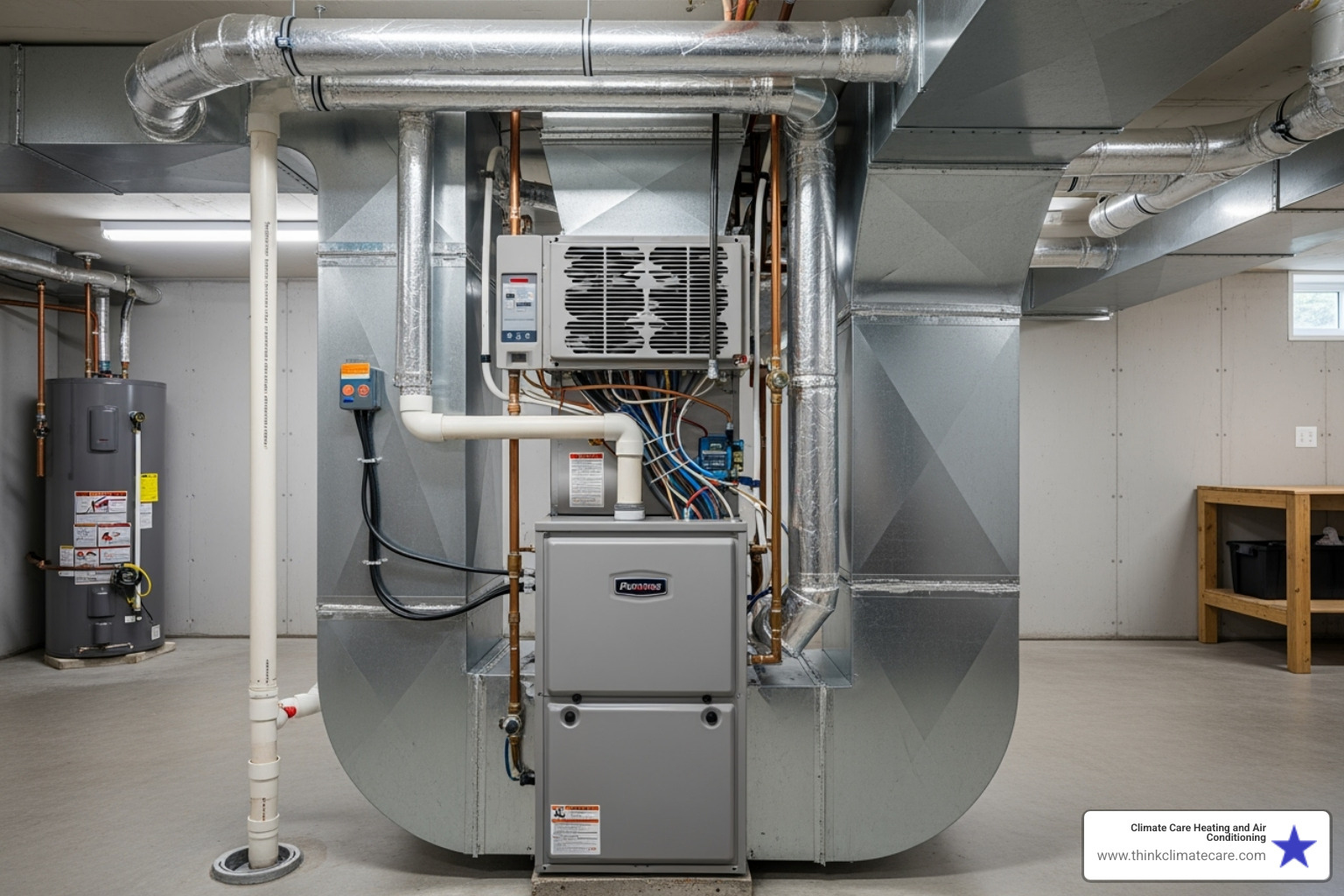
The heart of your system starts with the main equipment. Furnaces are your winter warriors, generating that cozy warm air when Manteca's temperatures drop. Air conditioners take over during those hot Central Valley summers, not just cooling your air but also pulling out excess humidity. Heat pumps are the versatile all-stars that can handle both heating and cooling with impressive energy efficiency – they're becoming increasingly popular with our customers.
Your air handler is like the circulation system of your home, moving that perfectly conditioned air throughout every room. And the thermostat? That's your command center, the brain that tells everything when to turn on and off. Modern thermostats have come a long way from those old round dial models!
But here's where many homeowners get surprised – even the most expensive, highest-rated equipment won't keep you comfortable if the air can't get where it needs to go. That's where proper ductwork design becomes absolutely critical. For professional ductwork services in our area, check out our Ductwork Installation Sacramento CA page.
Best Practices for Ductwork Design
If your HVAC equipment is the heart of your comfort system, then the ductwork is definitely the circulatory system. And just like in your body, if the circulation isn't working properly, everything else suffers. We've seen too many homes where beautiful, efficient equipment gets undermined by poorly designed ducts.
Our HVAC system design process follows ACCA Manual D standards religiously. We start by calculating the exact airflow (CFM) – that's Cubic Feet per Minute – that each room needs based on its specific heating and cooling requirements. It's not guesswork; it's precise engineering. For example, most cooling systems need about 400 CFM for every 12,000 BTU of cooling capacity.
The duct layout itself is like planning the most efficient highway system for your home. We map out every main duct, branch duct, and the strategic placement of supply and return grilles. Using methods like the equal friction method, we ensure consistent pressure throughout the system, so your master bedroom gets just as much comfortable air as your living room.
Here's something that might surprise you – every bend and turn in your ductwork makes your system work harder. It's like trying to breathe through a straw that keeps twisting and turning. That's why we minimize turns and obstructions wherever possible. When turns are absolutely necessary, we use special components like guide vanes to keep the air flowing smoothly.
Sealing joints is where we see the biggest energy waste in existing homes. Leaky ducts can lose 20-30% of your conditioned air before it ever reaches you – imagine paying to cool the inside of your walls! We seal every joint with professional-grade mastic or high-temperature caulking. It's not glamorous work, but it's what makes the difference between an okay system and a great one.
Don't forget about insulation either. If your ducts run through your attic (and in many Manteca homes, they do), uninsulated ducts are working against you. We specify the right R-value insulation to keep that perfectly conditioned air at the right temperature all the way to your rooms.
Finally, we install Volume Control Dampers strategically throughout the system. These allow us to fine-tune airflow to each area, ensuring your home office doesn't get blasted with cold air while your kitchen stays comfortable.
When ductwork is designed and installed correctly, your home feels evenly comfortable, your energy bills stay reasonable, and your equipment lasts longer. If you're dealing with uneven temperatures or high energy costs, you might find our guides on Common Ductwork Problems and Solutions and Is Poor Ductwork Causing High Energy Bills? helpful.
Advanced Strategies for Peak Performance and Efficiency
Modern HVAC system design integrates advanced strategies to improve comfort, maximize efficiency, and tap into renewable energy.
- Smart Thermostats: Learn your preferences, optimize energy use, and allow remote control for convenience and savings.
- Zoning Systems: Divide your home into distinct areas with their own temperature control, conditioning only the spaces you use for significant energy savings.
- Heat/Energy Recovery Ventilators (HRVs/ERVs): Improve IAQ by bringing in fresh air while recovering energy from outgoing stale air, reducing the load on your main HVAC system.
- High-Efficiency Insulation: A well-insulated home envelope is fundamental, with high R-value materials reducing your HVAC system's workload.
- Geothermal Systems: Tap into the earth's stable temperatures for highly efficient heating and cooling, offering a long-lasting investment in renewable energy.
- Solar-Assisted HVAC: Integrating solar panels can offset your HVAC system's electricity use, reducing bills and your environmental impact.
Integrating Controls and Safety Features
A sophisticated HVAC system design includes intelligent controls and safety features to optimize performance and protect your home and family.
- Programmable and Smart Controls: Modern systems feature programmable thermostats and smart controls with Wi-Fi for remote access, precise temperature adjustment, and energy monitoring.
- Safety Features: We prioritize safety by incorporating:
- Carbon Monoxide Detectors: Essential for homes with fuel-burning appliances.
- Smoke Detectors: Can be integrated to shut down the system during a fire to prevent smoke circulation.
- Automatic Shut-offs: Protect equipment from damage due to issues like overheating.
These features contribute to the comfort, efficiency, and peace of mind a well-designed system provides. To explore smart technology, read our blog post on The Future of HVAC: Embracing Smart Technology for Energy Savings.
The Modern Toolkit for Accurate HVAC System Design
Modern HVAC system design requires sophisticated tools. At Climate Care, we use cutting-edge software to ensure precision and optimal performance:
- Building Information Modeling (BIM): Creates a 3D model of your home's HVAC system to visualize layouts and detect spatial conflicts before construction, preventing costly rework. You can learn more about How BIM facilitates better building design.
- Load Calculation Software: We use specialized software to perform detailed load calculations based on ASHRAE methods for accurate system sizing.
- Energy Modeling: This software analyzes how different designs will perform year-round, helping us make data-driven decisions for maximum efficiency.
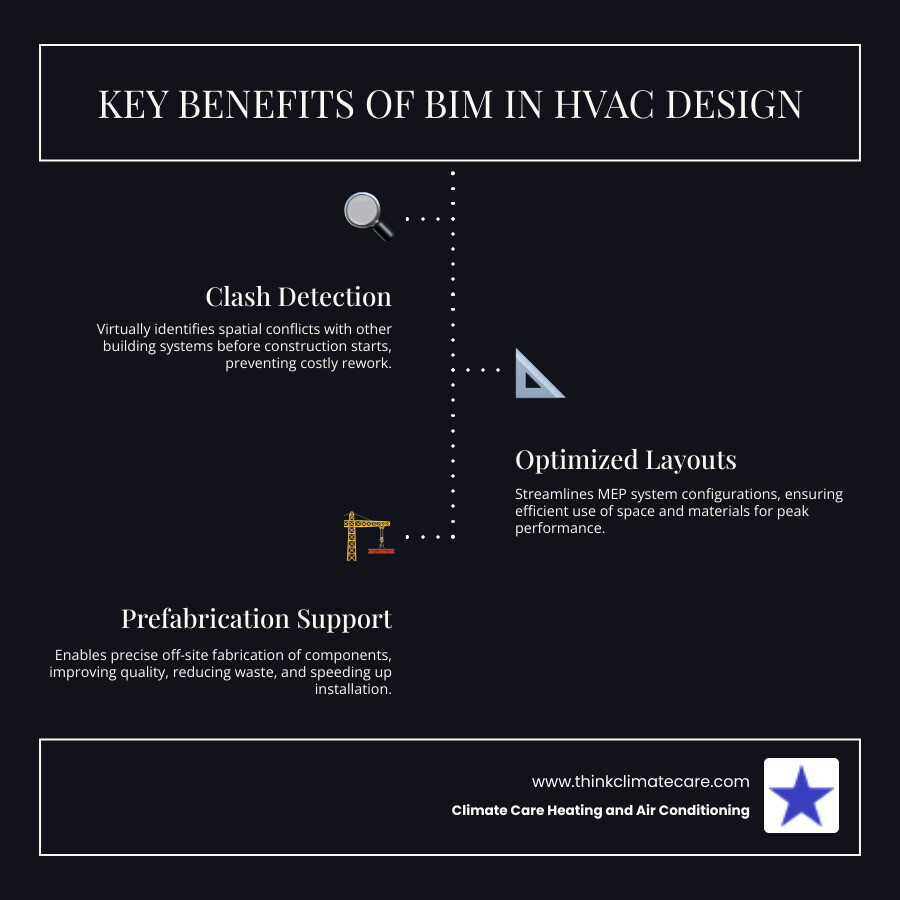
These modern tools lead to a smoother design and installation process and a superior HVAC system. We are also dedicated to providing Eco-Friendly HVAC Solutions for a Sustainable Home.
Frequently Asked Questions about HVAC Design
When it comes to HVAC system design, homeowners often have questions about the process, timeline, and whether they can tackle it themselves. Let's address the most common concerns we hear from Manteca families.
What is the most important factor in HVAC system design?
Without a doubt, accurate load calculation is the foundation of everything else. Using industry standards like ACCA Manual J, we determine exactly how much heating and cooling your home needs. This isn't just about square footage - it's a detailed analysis that considers your home's insulation, windows, orientation, and even how many people live there.
Think of it this way: if we get the load calculation wrong, everything else falls apart. An oversized system will short-cycle and waste energy. An undersized system will run constantly and never keep you comfortable. The load calculation dictates the correct sizing of all your equipment, which directly impacts your efficiency, comfort, and long-term costs.
This is why we never cut corners on this step. It's the difference between a system that works beautifully for 15-20 years and one that causes headaches from day one.
How long does an HVAC system design process take?
For a typical home, thorough HVAC system design takes time - and that's a good thing. A qualified professional needs several hours to a full day to complete the process properly. This includes detailed load calculations, careful equipment selection, and comprehensive ductwork layout.
We know it might seem like a long time, but consider what we're doing: measuring your home, analyzing building materials, calculating heat gains and losses, sizing equipment to the exact BTU, and designing a ductwork system that delivers perfect airflow to every room.
Some contractors might promise to "eyeball it" in an hour, but that's exactly how you end up with problems later. We'd rather invest the time upfront to get it right than have you deal with comfort issues and high energy bills for years to come.
Can I design my own HVAC system?
While we appreciate the DIY spirit, HVAC system design is one area where we strongly recommend leaving it to the professionals. Yes, it's technically possible to design your own system, but the risks far outweigh any potential savings.
Professional design requires specialized software that costs thousands of dollars, plus deep knowledge of building codes, physics (like psychrometrics - the science of air and moisture), and years of hands-on experience. One mistake in load calculations or ductwork design can lead to costly problems that impact both comfort and safety.
We've seen too many homes where well-meaning homeowners tried to design their own systems, only to end up with uneven temperatures, sky-high energy bills, and equipment that breaks down prematurely. The money you might save upfront gets eaten up quickly by these issues.
At Climate Care, we've invested in the training, software, and experience needed to design systems that work perfectly from day one. It's what we do best, and it's why Manteca homeowners trust us with their comfort.
Conclusion
Your home deserves more than guesswork when it comes to comfort. As we've explored throughout this guide, HVAC system design isn't just about picking the biggest unit or the cheapest option—it's a careful, scientific approach that touches every aspect of your family's daily life.
Think about it: you wouldn't build a house without blueprints, yet so many homeowners end up with HVAC systems that were never properly designed. The result? Those frustrating hot and cold spots, sky-high energy bills, and equipment that seems to break down just when you need it most.
Professional design makes all the difference. When we take the time to calculate your home's exact heating and cooling needs, size equipment properly, and design ductwork that actually works, you get a system that performs beautifully for years to come. It's the difference between surviving your home's climate and truly enjoying it.
The benefits speak for themselves: long-term savings through lower energy bills and fewer repair calls, system longevity that protects your investment, and most importantly, homeowner peace of mind. There's something wonderful about knowing your family will be comfortable no matter what Mother Nature throws your way.
At Climate Care, we've built our reputation on understanding that every home is unique. Our Climate Care expertise goes beyond just installing equipment—we design systems that work specifically for your family's needs, your home's characteristics, and your budget. It's this attention to detail that has made us the trusted choice for homeowners throughout Manteca and the surrounding areas.
Your comfort is too important to leave to chance. When you're ready to experience what a properly designed HVAC system can do for your home, we're here to help. Contact us for expert HVAC installation in Sacramento and find why so many families trust Climate Care for their heating and cooling needs.
Customer Testimonials
Our customers love our service and support.












